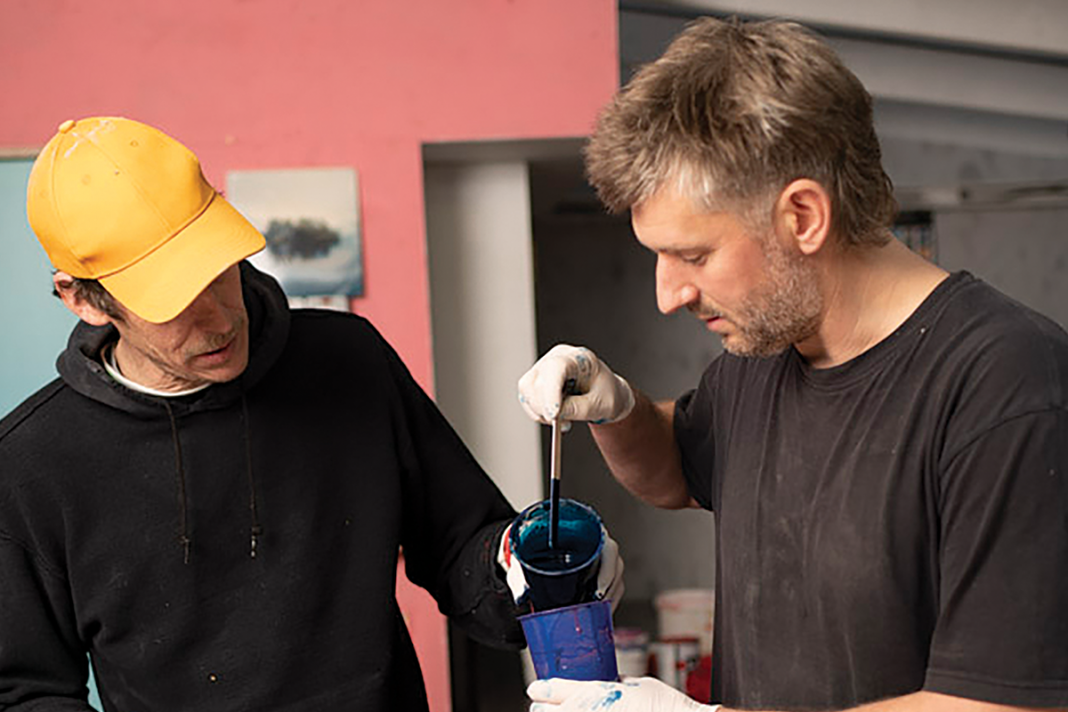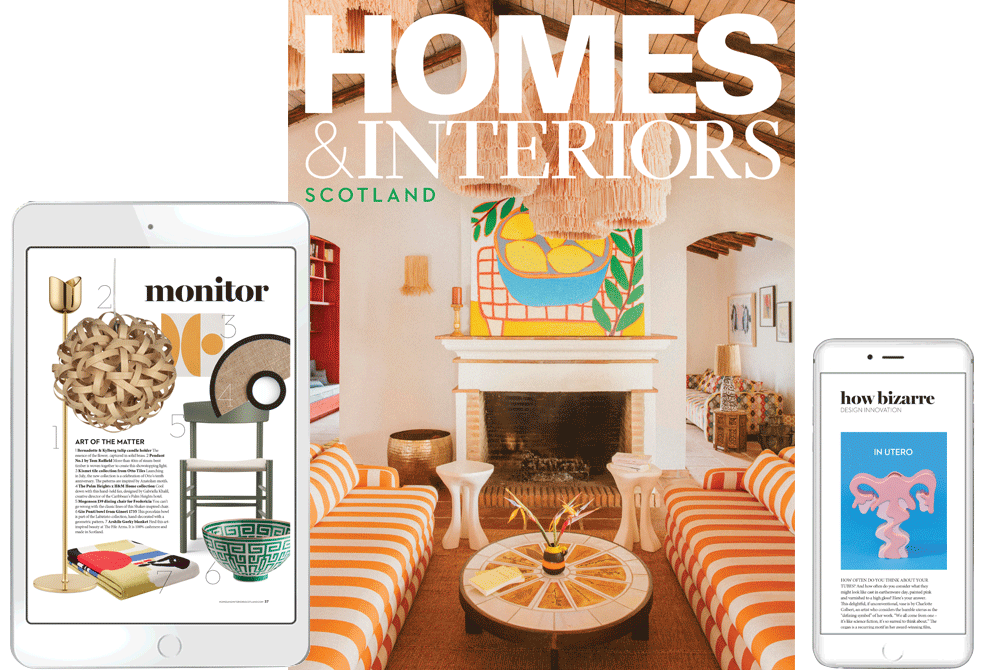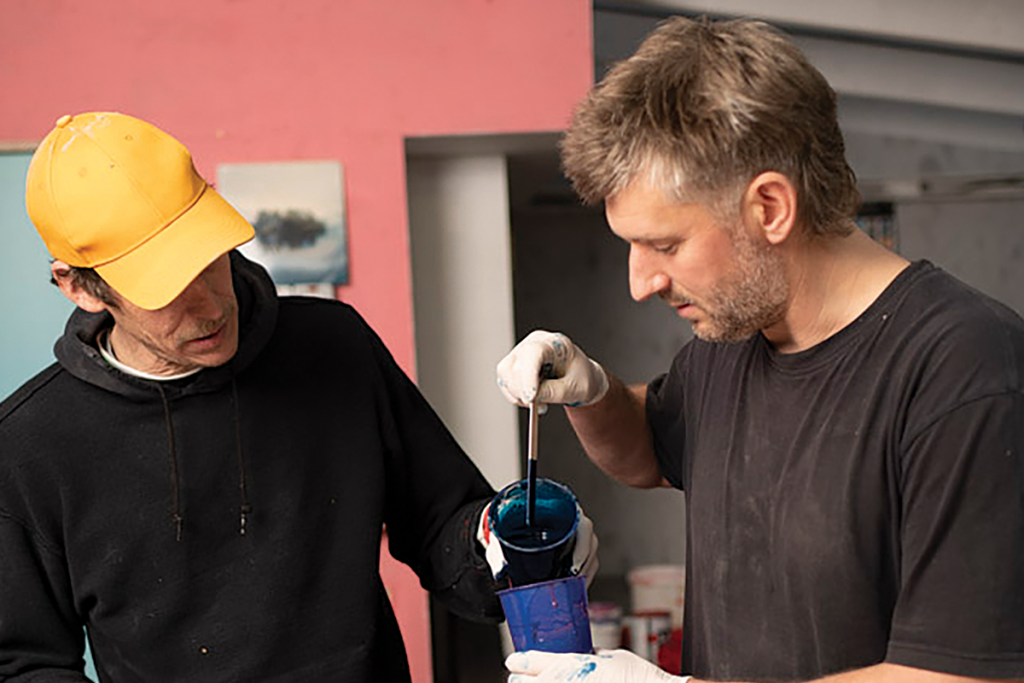
Interview Catherine Coyle
Simon Harlow: “I’ve always had creative blood in my veins. My dad was a potter and my mum was a piano teacher and I grew up surrounded by an inquisitive take on the ‘made’ world and what it might mean. I can remember always being interested in what things looked like and how they worked and, later, how they were made. I met Lewis at Glasgow School of Art as part of a heady social life fuelled by speed, booze, hash and dance, centred around the Vic bar. We had loads in common and hung out and got messy a lot.
After art school, he got into boatbuilding and went around the world with the band Mylo, and I got into making furniture and artwork and went to Japan for a while. There, eating dinner with my friend Kaori’s family one night, I came across a pair of chopsticks made out of something incredibly beautiful that I’d never seen before. It wasn’t wood, or metal, or stone, or plastic. It wasn’t from a plant, or part of an animal. What on earth were these exquisitely detailed, smooth, warm and colourful things made from? They were other-worldly, cosmic. I was lost for words. With Kaori’s help, I found out that the chopsticks had been made using an old lacquerwork technique called Tsugaru Nuri from the north of Japan.
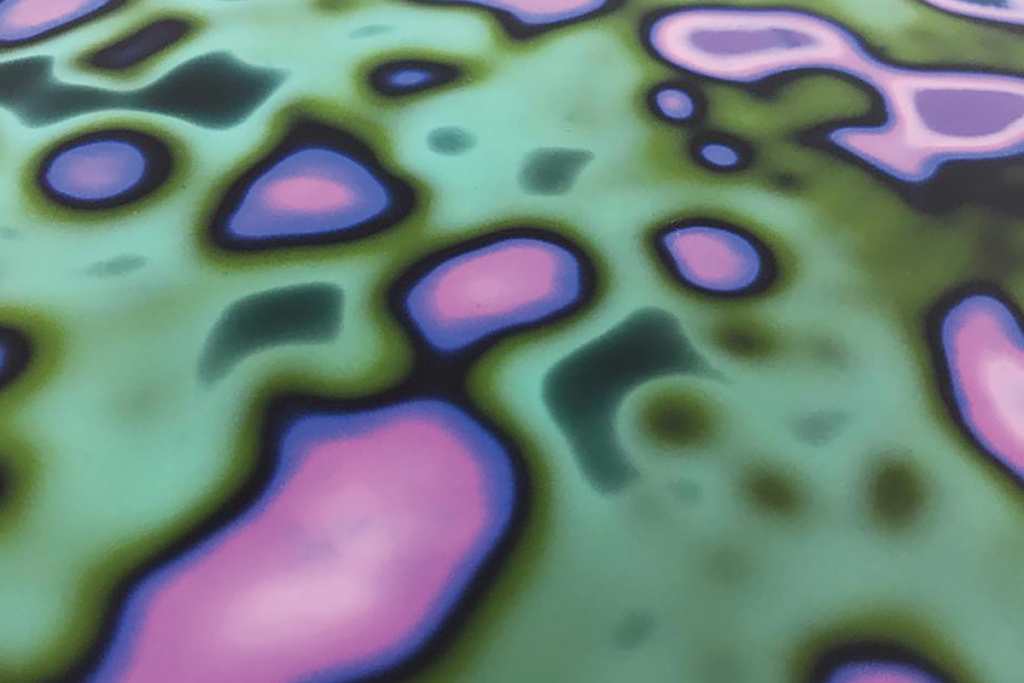
Back in Scotland, I tried for months to replicate the pattern to no avail, until I sanded something back and there it was – the same stuff! And that is the origin of Mirrl as a material.
I love Glasgow. I think it’s unique in just how many creatives it has per head of population, and equally unique in how much solidarity there for everyone to strive to make good work. Low overheads and a strong DIY culture mean there’s a real ‘can do’ spirit, too. It feels like a village – everyone seems to know each other, or they can do quite easily if they don’t already.
I can find inspiration everywhere: from having a few minutes outdoors at dawn before the wee man or my partner are awake, listening to the birds get themselves organised for the day; to finding out how the Anglo-Saxons enamelled their jewellery; to seeing what @chairs_of_virtue has put up on Instagram; to watching engineering videos.
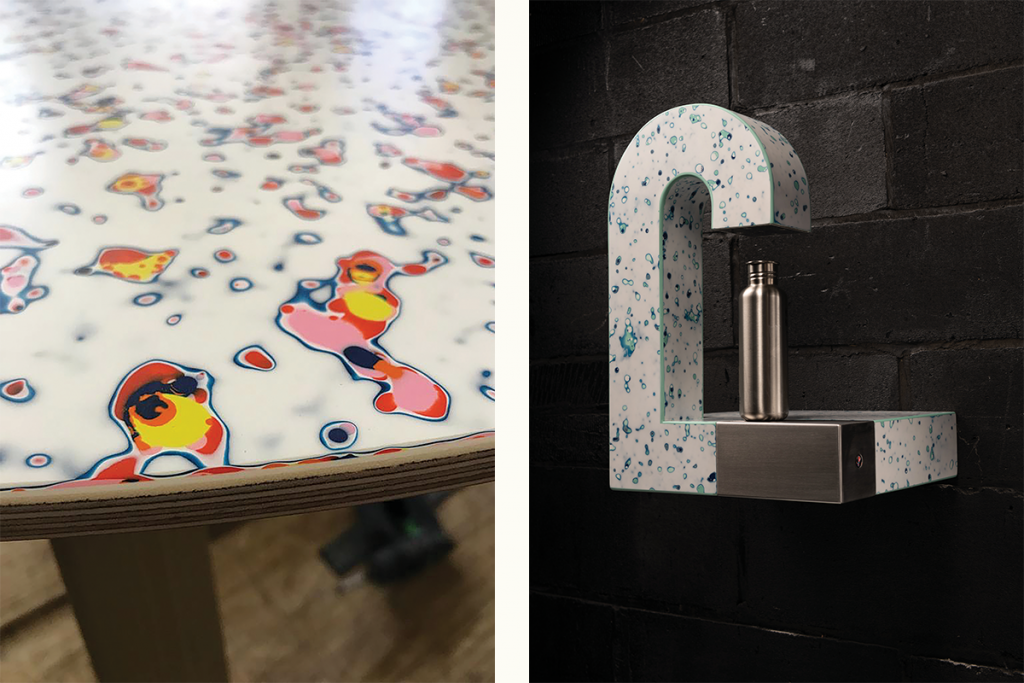
Lewis Harley: “I met Simon in 1995 when he was studying Environmental Art and I was in Photography. We met in the halls of residence – I remember being quite stoned and noticing he had a wooden box with ‘Quality’ painted on it, full of bike parts. He was the right kind of weird, I thought.
I’d always been struck by the resin work he’d produced back in 2002. And when I was looking to get back in to ‘making’ in 2016, we started talking about taking it further, making a plan to turn what Simon was already doing into a stand-alone product.
My background with resin work came through boat-building. My uncle was a shipwright who got me doing some glassing work. I was instantly captivated by the process and I loved the liquid-to-solid nature of it. I did a boatbuilding course in Greenock and then, after a stint as a bass player for Mylo, I ended up working for Greenpeace through the Glastonbury festival. I then worked for Greenpeace in London and Sydney for seven years, where part of my job was to look after the boats – they were regularly bashed so that meant a lot of resin work.
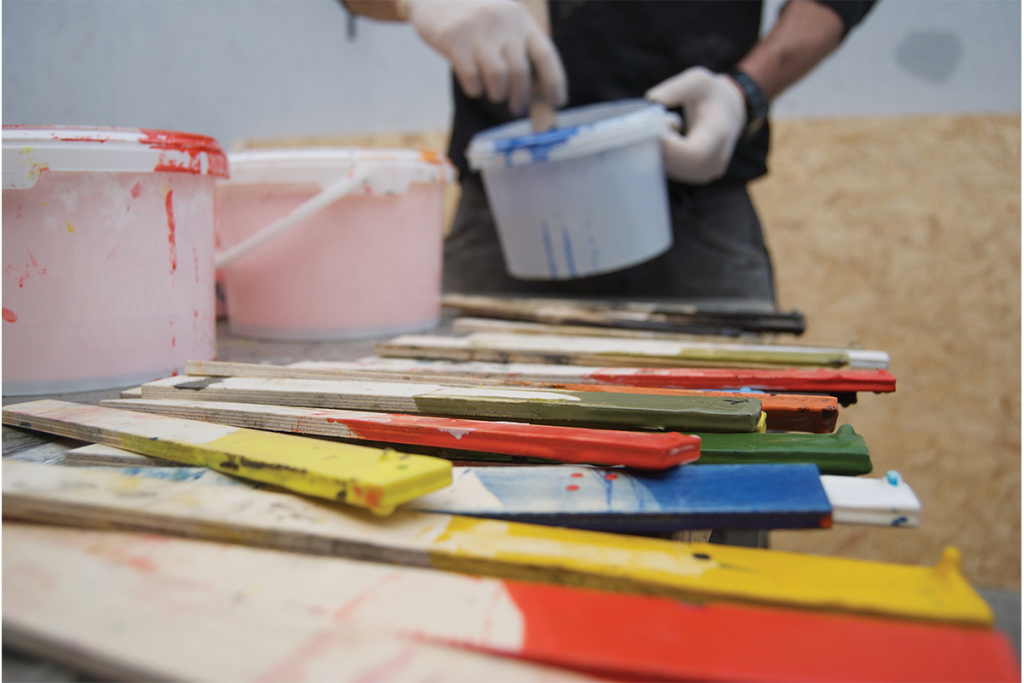
Our ideas with Mirrl come from all over the place. Simon is bike obsessed and I have a surfboard fetish and we’ll often find a crossover there. At the moment I’m trawling through a big collection of 1970s Crumb comics my dad left me, and I think it’s leading towards something jarring, colour-wise.
Our bread and butter has been a mix of commercial and domestic commissions, such as kitchens and furniture pieces. As we add more small products to the range, it will hopefully split into two even streams and, as the world reopens, we expect to see a growing return on the commercial enquiries. It’s already beginning to ramp up again.
Looking for more? Try Gilly Nicolson’s bespoke bed linen


